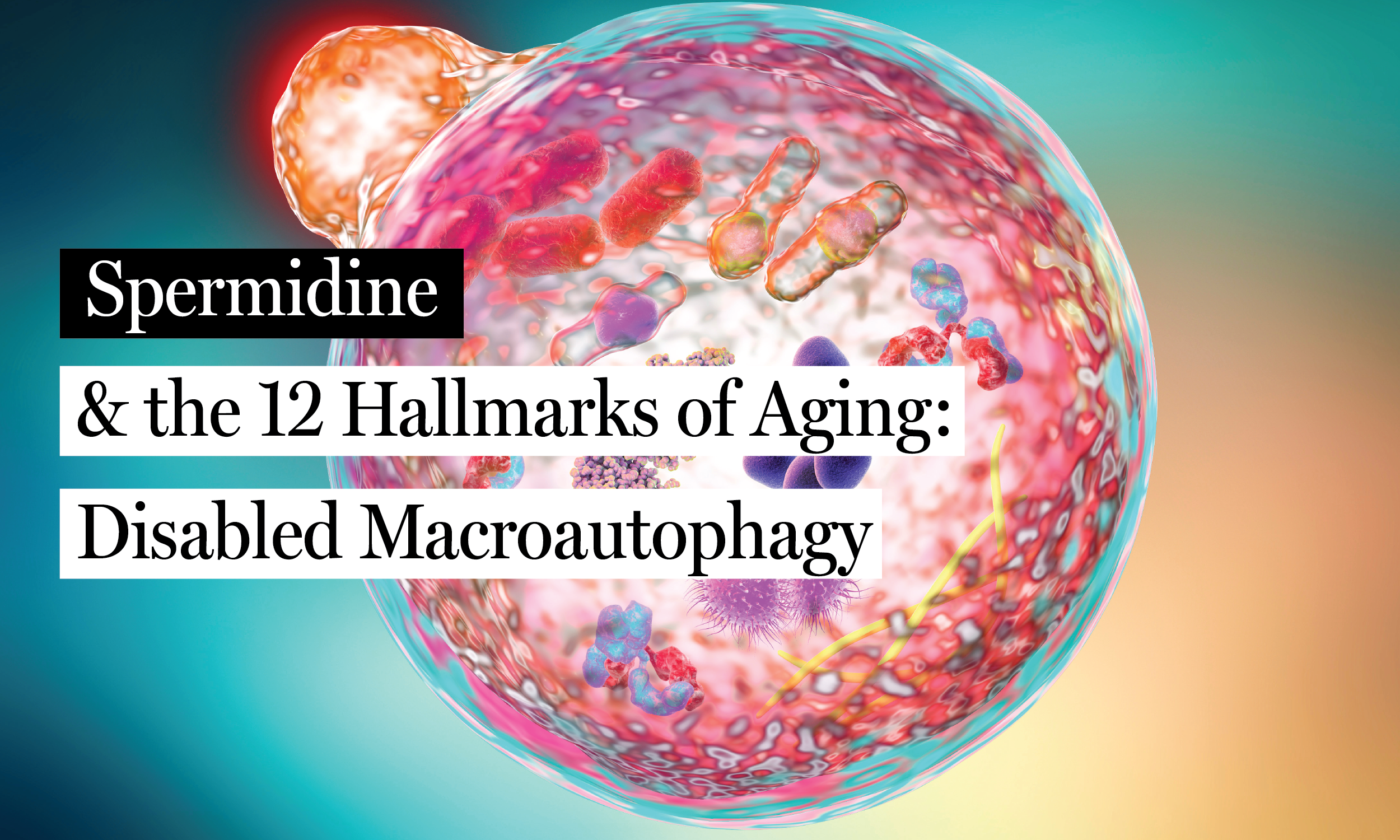
Aging is a multifaceted biological process marked by the gradual decline of cellular and organismal functions. Among the hallmarks of aging, disabled macroautophagy plays a critical role in age-related deterioration. Macroautophagy, often simply called autophagy, is a vital cellular recycling process that breaks down and removes damaged components such as organelles, misfolded proteins, and other cellular debris. This process begins with the formation of a double-membraned structure called an autophagosome, which engulfs the targeted material. The autophagosome then fuses with a lysosome, forming an autolysosome, where the contents are degraded and recycled. When autophagy specifically targets damaged mitochondria, the process is known as mitophagy.
When autophagy is functioning optimally, it supports cellular proteostasis, metabolic efficiency, and overall resilience. However, with advancing age, autophagic flux becomes impaired, leading to the accumulation of cellular waste and contributing to the onset and progression of numerous age-related pathologies, including neurodegenerative diseases, cardiovascular dysfunction, and metabolic disorders. This decline in autophagy is formally recognized as the 5th hallmark of aging: Disabled Macroautophagy.
When autophagy slows down, it doesn’t just lead to a little cellular clutter. It sets off a chain reaction that touches nearly every other hallmark of aging: loss of proteostasis, mitochondrial dysfunction, cellular senescence, genomic instability, chronic low-grade inflammation (inflammaging)—you name it. It's like a broken garbage disposal in your kitchen; soon enough, the whole house starts to smell.
Because it plays such a pivotal role in maintaining cellular health, impaired autophagy is both a cause and consequence of aging, making it a powerful target for interventions like spermidine that aim to restore healthy cellular function.
How spermidine protects against disabled macroautophagy
Spermidine induces (macro)autophagy through multiple mechanisms:
- Hypusination of eIF5A: Spermidine serves as a substrate for the hypusination of eukaryotic initiation factor 5A (eIF5A), a unique post-translational modification that requires spermidine as the sole donor of its aminobutyl group. Hypusinated eIF5A triggers the synthesis of key proteins involved in autophagy, such as ATG3 and TFEB (transcription factor EB), which regulate lysosomal biogenesis and autophagic processes.
- Inhibition of acetyltransferases: Spermidine inhibits EP300, a histone acetyltransferase that typically adds acetyl groups to proteins, including those involved in autophagy (called autophagy-related genes or ATGs). When EP300 acetylates these ATGs, it inactivates them, preventing autophagy from being triggered. By suppressing EP300 activity, spermidine reduces this acetylation, which allows ATGs to be activated and remain functional. This activation is essential for initiating and promoting the autophagy process, helping cells clear damaged components and maintain healthy function.
- Activation of deacetylases: Spermidine stimulates histone deacetylases (HDACs), including HDAC4 and SIRT1, which play a role in deacetylating autophagy-related proteins. This deacetylation enhances autophagic flux and supports the recycling of cellular components.
- Improved mitochondrial function: Spermidine enhances mitophagy, the selective autophagic removal of damaged mitochondria. This process is vital for maintaining mitochondrial quality and cellular energy production, which are often compromised during aging.
Spermidine supports autophagy through your food, your gut, and your supplement!
Spermidine is essential for optimal cellular function—and the good news is, your body has multiple ways to get it. It’s found in virtually all foods, though some deliver a much higher dose than others. On the menu: spermidine-rich options like shiitake mushrooms, cauliflower, wheat germ, and aged cheese.
But it doesn’t stop at the dinner table. Your gut microbiota is a built-in spermidine factory. Certain beneficial bacteria naturally produce it, and you can help them thrive with prebiotics and probiotics that support a healthy microbial balance. Think of it as cultivating your own internal garden—one that keeps your cells clean, efficient, and youthful.
And of course, there's supplementation. That’s where we come in at Longevity Labs. While food and gut health play a vital role, dietary spermidine intake can vary significantly depending on what you eat, how it’s sourced, and how well your gut microbiome is functioning. That variability makes it difficult to rely solely on food to reach levels shown to support autophagy and cellular renewal. That’s why we do what we do—providing a reliable, standardized source of spermidine to help you hit the threshold where the real cellular magic happens.
So whether it’s from your plate, your gut, or your supplement, maintaining healthy spermidine levels helps power up your cells’ natural renewal systems, enhancing resilience and promoting graceful aging. Cell care is self-care, friends.
(Adapted from López-Otín et al., 2022)
Curious about the other hallmarks of aging and how spermidine can help combat them? Read more here.







